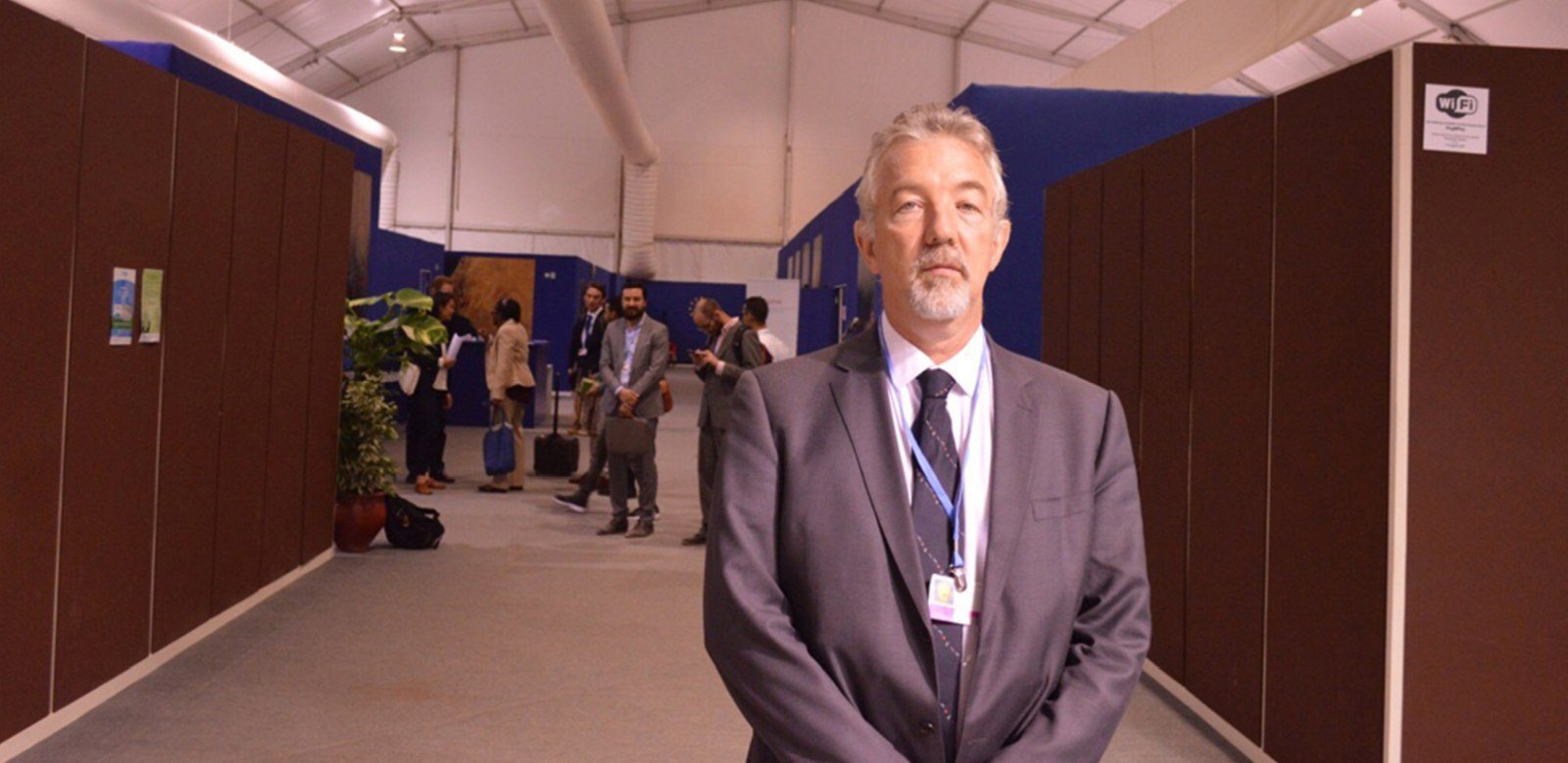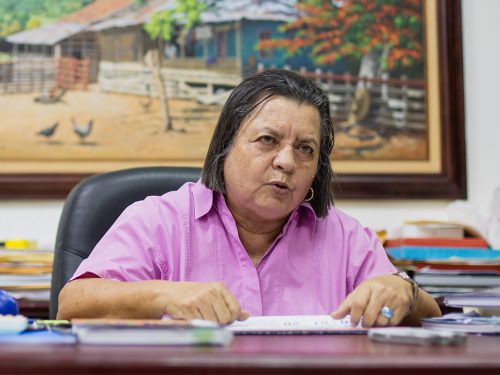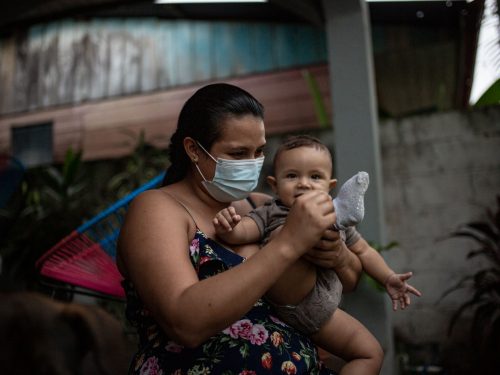
Climate forecasts for the Guanacaste region from one of the most important global meetings, the U.N. Climate Change Summit in Morocco (COP22), aren’t very encouraging, admits Pascal Girot, sector coordinator for the Government Climate Change Office.
In an interview with The Voice of Guanacaste, the expert and government official discussed new strategies that should be adopted by small and large agricultural producers, livestock owners, hotel owners and residents in Guanacaste to adapt to the consequences of climate change that will affect the region in coming years.
The intensity of these consequences will be determined not only by decisions the country makes, but also decisions by all of the world’s countries. Following is an excerpt of the conversation:
VOG: How will climate change negotiations affect Guanacaste?
PG: Until the Paris agreement, that is until last year, many of these negotiations were conducted in two blocs: developed countries versus developing countries. Some said developed countries were to blame and should provide funding and reduce emissions, and that developing countries, including China and India, shared less responsibility in terms of mitigation. What the Paris agreement achieved was to slightly balance this out and define that all countries, as small as they may be, have a shared responsibility to reduce emissions.
In Costa Rica’s case, we presented our national input that defined an absolute goal for reducing emissions by 2030. We also have a series of goals for adaptation, which is the other main arm of the convention. Even if a miracle happens and we stop emitting greenhouse gases, enough energy will remain in the atmosphere to generate consequences.
The second arm is very important for Guanacaste, which is how we will lead with climate change consequences, such as how we will adapt, (and) how to have the technical and financial resources to do it. The same is true for mitigation: how to have the technological resources to reduce emissions in the transport sector and in the agricultural sector.
In terms of consequences, Guanacaste has all the winning Lottery numbers, with coastal communities, lack of water and a very traditional agricultural sector. … We’ve already seen it with the drought.
I would add the tourism sector, which is starting to be conscientious not only in terms of carbon neutrality, but also in better measuring the footprint of emissions by hotels, from the point of view of efficiency – efficient water use, for example. Tourism and agriculture are the first in line for climate change consequences in the country.
What experience can we extrapolate from the 2014-2015 drought that can help us confront climate change?
What climate change modeling in Costa Rica tells us is that what we saw in 2014-2015 could become the normal climate in Guanacaste from here to the end of the century if we don’t begin to mitigate, if the world doesn’t act. This is the worst-case scenario. In other words, we have to begin to prepare ourselves for a warmer and drier climate in Guanacaste. This happens by arduously working on adaptation in agriculture, in livestock. … We have to become more efficient, above all with water use.
The agricultural sector uses the most water in the country. It’s not just a matter of extracting water from the Tempisque (River). There’s an enormous number of jobs that could be done to optimize water use in agriculture. Reducing water waste in agriculture is a determining factor. If you go to the irrigation district, in Cañas, for example, you’ll see people literally with the water running. We must strategically manage a resource that is increasingly scarce. We can’t continue drawing water from all of the country’s watersheds for Guanacaste. It won’t be enough if we keep wasting it.
Was Guanacaste a type of laboratory during the drought? Will that experience help us as a country?
That’s an issue we’re working on in the Office of Climate Change, along with the National Emergency Commission, which is helping us learn to adapt. There’s a highly urgent issue, which is to understand the lessons and experiences of how we lived through El Niño in 2014-2015. These lessons are immensely important. Firstly, so that it doesn’t happen again, because our attitude is that “father government” will give us handouts and honey while we continue doing the same thing. I think that we simply can’t continue doing the same thing when confronted with climate change, but how can we change in order to avoid the losses we saw in 2014? If another drought happens, there will be losses, but hopefully they’ll be less severe. A farmer should know what to do to access rainwater systems, crops that are more resistant to drought, and begin to implement those methods immediately, and not wait for the next El Niño to act, but rather prevent.
So we can expect more droughts?
There definitely will be more. I’ll go out on a limb and say we’re going to have increasingly severe episodes of drought in Guanacaste. That’s why it’s crucial that we learn from the last drought before it’s forgotten. People forget that just a year ago they were in a difficult situation. That’s why it’s important to announce more droughts are coming.
Agriculture and livestock in Guanacaste generates about 12 percent of jobs there, according to the National Household Survey. But there’s a cultural element, too: Culturally, farmers are part of the Guanacastecan idiosyncrasy. Nevertheless, does it make sense to continue depending on this type of economy?
People aren’t going to simply stop planting crops because we make them. More and more people who live in rural areas are not working directly in agriculture, but in services related to agriculture. Then there are people who work in tourism, which will continue as the greatest generator of foreign income in the country and an important alternative for Guanacaste.
We also need to produce rice for the domestic market, along with vegetables and meat for the national market, and to a certain extent continue exporting. The issue is how can we strongly work on the issue of adaptation.
How?
Adaptation in tourist areas and agriculture is along the same policy lines as rational use of water resources, by necessity. And that’s where there’s urgent work to be done. Rainwater harvesting technology already exists. More and more trickle-type irrigation techniques are within reach, even for small and medium-sized farmers. In other words, we genuinely have the capacity to innovate in this field and view adaptation not as an imposition, but rather as something that stimulates creativity and creation at a community level.
The result of COP22, then, is where is the money going to come from to help us achieve adaptation.
We’re working on that. And we’re waiting to begin formulating an adaptation plan for next year. Our environment and agriculture ministers are here, and that sends a very clear message that climate change is a top priority issue for Costa Rica. People expect a great deal from Costa Rica.







Comments